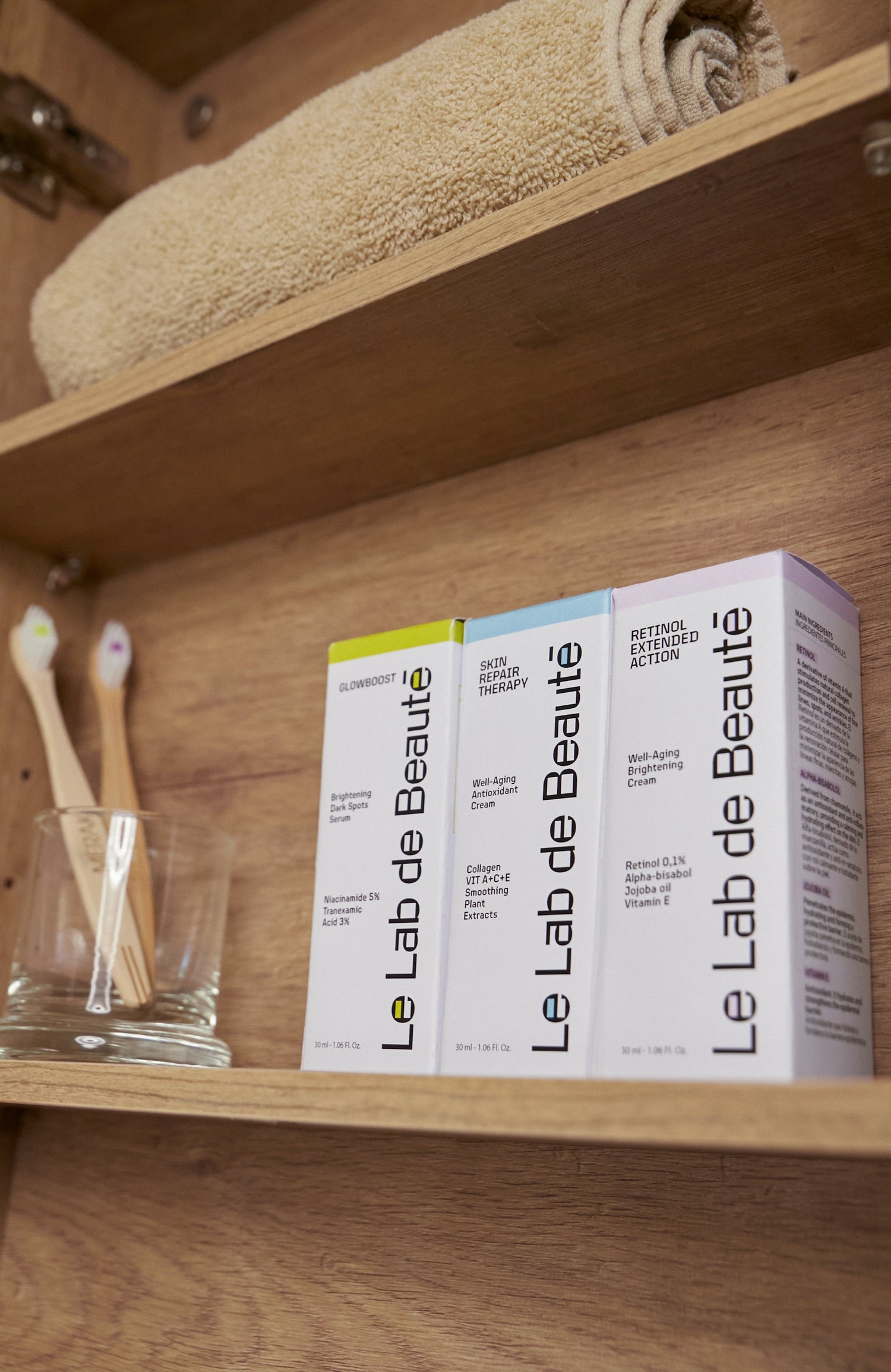
An indispensable recommendation in aesthetic medicine
Share
Sunscreen is no longer just a recommendation for beach days. In clinical and aesthetic contexts, its consistent daily use is considered a fundamental pillar in the prevention, treatment, and maintenance of skin health.
Why insist so much on sunscreen?
From a dermatological perspective, ultraviolet (UV) radiation is one of the main extrinsic factors responsible for premature photoaging, hyperpigmentation, chronic inflammation, and, in more severe cases, skin cancer. Even visible light (especially blue light from screens or LED lamps) and infrared radiation can trigger oxidative stress, pigmentation changes, and worsen inflammatory conditions such as melasma or acne.
This makes sunscreen a therapeutic and preventative asset, especially for patients undergoing medical-aesthetic procedures such as laser, chemical peels, microneedling, or retinoid use.
Clinical benefits of sunscreen in daily routine
- Photoaging prevention: Significantly reduces the formation of wrinkles, sagging and spots caused by UV radiation.
- Enhancement of aesthetic results: Protects the skin post-procedure, preventing post-inflammatory hyperpigmentation and promoting better regeneration.
- Cancer prevention: Its regular use is associated with a lower incidence of precancerous lesions and non-melanoma skin cancer.
- Treatment of pigmentation pathologies: In patients with melasma, solar lentigines, or post-inflammatory hyperpigmentation, sunscreen is just as important as depigmenting agents.
What is the ideal sunscreen?
For daily use, a sunscreen is recommended:
- Broad spectrum (UVA, UVB, visible light and infrared)
- With FPS 40 or higher
- Adapted to the skin type and expected exposure (urban, sports, professional, etc.)
- With pleasant textures that facilitate adherence (gel, fluid, dry touch, with color, etc.)
- For skin with specific conditions (acne, rosacea, melasma), it is ideal to opt for non-comedogenic formulas with antioxidants, mineral pigments, or physical filters, as appropriate.
Practical recommendations for the patient
- Apply as the last step of your morning routine (after moisturizer and before makeup).
- Use a sufficient amount: approximately 1/2 teaspoon for face, neck and ears.
- Reapply every 2 to 3 hours if there is direct sun exposure, sweat or contact with water.
- Use daily, even on cloudy days, indoors or in front of screens.
The role of the aesthetic professional
As a healthcare provider, you play a central role in educating patients about consistent sunscreen use. Appropriate, personalized prescriptions and a clear explanation of its benefits not only increase adherence but also strengthen patient confidence in the overall treatment.
Conclusion
Including sunscreen in every facial care routine isn't a cosmetic option: it's a medical necessity. It's a preventative tool, a protective barrier, and a therapeutic ally that enhances clinical results and protects the patient's investment in their skin health.

